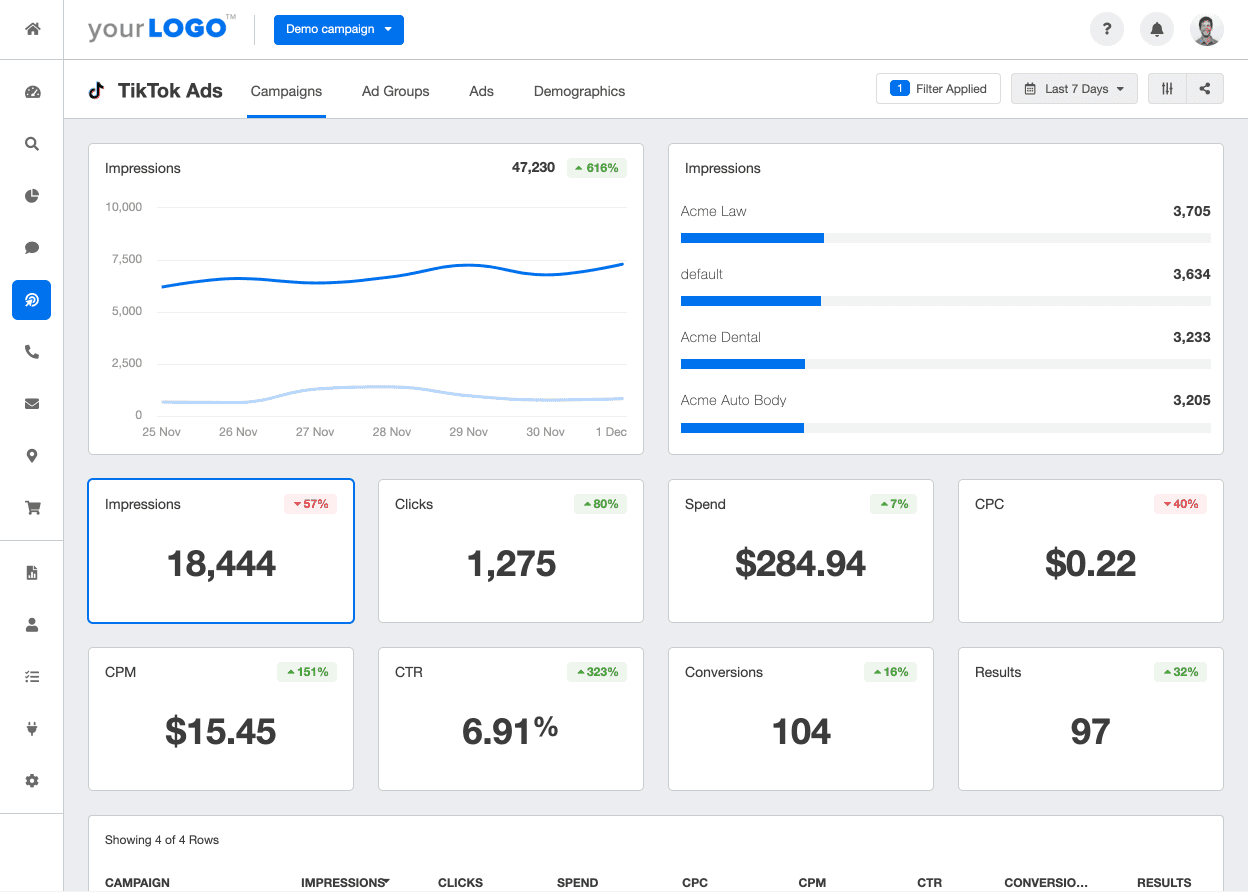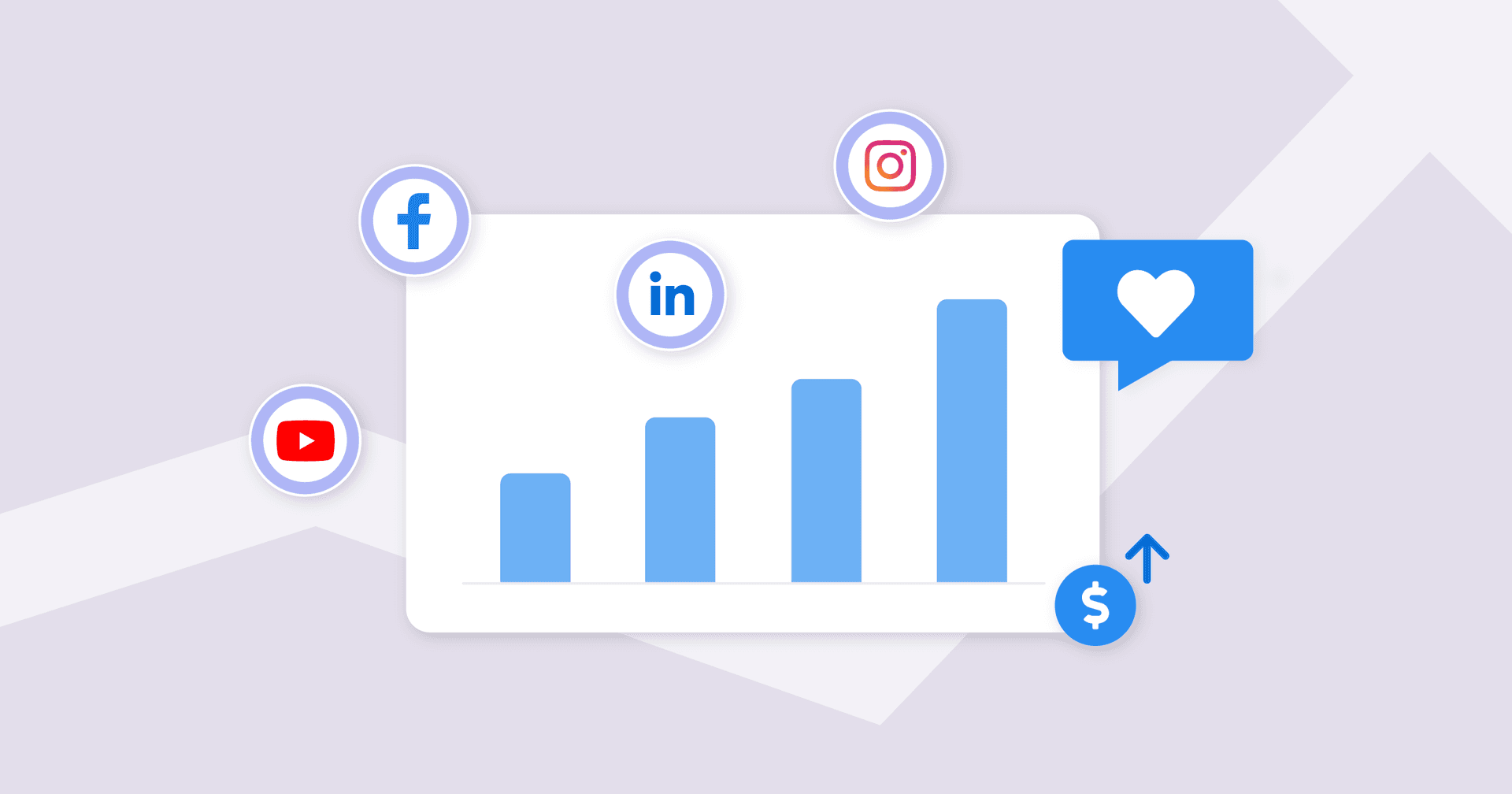
Influencer marketing is like having a friend who's really good at recommending things.
We all have one of those: They’re trying and showing off the latest fashion, have impeccable taste in music, and will give you the perfect book recommendation for just about any topic that pops up in conversation.
Based on our Marketing Agency Benchmarks Survey, influencer marketing continues to be the most promising channel for agency growth, with 24% of respondents choosing it over any other channel. (Not surprisingly, social media platforms, where influencers thrive, hold the second spot at 21%.)

So, is your agency ready to hitch its wagon to the influencer marketing train?
In this article, we’ll explore emerging influencer marketing trends for 2024 and how agencies should best use them in their marketing strategy to grow their clients’ reach.
What Is Influencer Marketing and Is It Still Worth It in 2024?
Influencer marketing reaches audiences via individuals who command a significant following on social media platforms. It's about leveraging the trust and credibility these influencers have built with their audience to advocate for a brand, share its messages, and endorse products or services. Think of it as a modern twist on word-of-mouth advertising, supercharged by the digital age's connectivity and scale.
For a marketing agency, this means identifying and collaborating with influencers whose brand, tone, and audience align with your client's targets. The goal is to craft authentic and engaging narratives that highlight your client's offerings and fit seamlessly into the influencer's content stream, making the promotion feel natural and genuine to the audience.
Emily Carpenter understands full-well the power of partnering with influencers. Before becoming Director of Marketing for Digital Retail Partners, an integrated design and marketing agency, Carpenter worked for men’s custom clothing brand J.Hilburn.

Emily Carpenter, Director of Marketing for Digital Retail Partners.
In her role as Marketing Specialist for the clothing brand, she helped build a strategic partnership with Marcus Spears, ESPN analyst and former NFL player, who became a brand steward for J.Hilburn.
Carpenter has taken this partnership approach to DRP, where she pairs clients with influencers that match their marketing objectives.
Each campaign and client we have all have very different budgets and goals for their influencer marketing. For our large clients, we use LTK to source influencers and creators that fit their specific demographic target, whether it be the income level of their audience or where they are located geographically. For the smaller clients, we source the old-fashioned way—hashtags and location tags. Audience information isn’t readily available when we source organically, but we get to start a conversation with them.
Emily Carpenter, Director of Marketing, Digital Retail Partners
According to Emily, the good news is that whether your clients are big or small, there’s probably an influencer that matches their objectives—from brand building to sales-oriented sponsored ads.
5 Notable Influencer Marketing Statistics for 2024
According to Internet Marketing Hub, the influencer marketing industry grew to $21.1 billion in 2023 (up from $16.4 billion in 2022).
42% of respondents in IMH’s report said they prefer influencers for how-to content and tutorials.
According to Matter Communications, 61% of respondents found relatable personalities to be the most appealing. Expert personalities ranked second at 43%, while only 11% preferred celebrities.
According to HubSpot, 80% of influencer marketers work with smaller creators.
Of all age groups, Gen Zers trust influencers the most, and 33% of Gen Zers have bought a product based on an influencer's recommendations.
Perks of Working With Influencers
For clients who want to get their name and products in front of the right audience, there’s nothing as awesome as a dedicated word-of-mouth creator working in the right space.
Here are a few reasons why:
Credibility
Influencers, with their built-in trust and rapport with followers, offer something traditional ads cannot: credibility. When an influencer endorses a product, their followers take note, much like they would with a recommendation from a friend.
Precision Targeting
By partnering with influencers whose audience demographics align closely with a client's target market, agencies ensure that marketing efforts are seen and resonate with the intended audience.
Conversational
Influencers create a two-way dialogue with their audience, making each campaign more interactive and personal. This level of engagement leads to deeper brand connections and loyalty.
Authenticity
Influencers excel at creating content that feels personal and genuine, breaking through the noise of traditional advertising. This authenticity, coupled with the influencers' creativity, brings a fresh and relatable perspective to a client's message.
Cost Effective
Influencer marketing campaigns offer a favorable return on investment, especially when compared to more expensive paid campaigns. The flexibility in structuring partnerships, from sponsored content to product exchanges, allows for tailored campaigns that fit various budgets.
We decide who to work with based on their asking price, and that’s when we bring the client into the process. This is usually after an influencer has been vetted and determined to be a good partner. When the client is presented with a list of influencers and their respective rates, they hold the final say on whether we will move forward with them.
Emily Carpenter, Director of Marketing, Digital Retail Partners
Enhanced SEO and Visibility
Influencer endorsements lead to more online mentions and backlinks, improving a client's search engine ranking and extending its digital footprint.
Receive Agency Growth Tips, Delivered to Your Inbox
Drawbacks of Working With Influencers
Authenticity
Wait—didn’t we just say authenticity was a perk? Yes. However, authenticity is also influencer marketing’s Achilles' heel. Audiences are becoming increasingly savvy at distinguishing between heartfelt endorsements and forced promotions. Before your agency signs on with an influencer, make sure they’re a pro at walking this fine line.
Engagement
While many influencers boast impressive engagement rates, metrics are often inconsistent. An influencer who was once highly engaging may see a dip in interaction due to changes in platform algorithms or audience behavior.
Transparency
Regulatory bodies worldwide (including the FTC in the U.S.) have begun imposing stricter guidelines on sponsored content, influencer content, and paid ads, demanding clear disclosures. Agencies must navigate these regulations carefully to maintain transparency and avoid potential legal pitfalls.
Missteps
Aligning with an influencer means tying a client's reputation to that individual's public persona. Potential missteps by influencers, such as controversial statements or actions made on social media, will reflect poorly on the clients they represent.
We take into consideration any negative press or backlash a potential Influencer has recently been involved in. I think it’s important that the influencers our clients partner with align with their core beliefs and truly believe in the products they are promoting. The customer is intelligent and is very capable of spotting fraud, so the partnership needs to be mutually agreed upon by both the client and the influencer.
Emily Carpenter, Director of Marketing, Digital Retail Partners
Influencer Fatigue
As more brands jump on the influencer bandwagon, audiences are experiencing influencer fatigue and becoming less receptive to sponsored content. Agencies must find innovative ways to cut through the noise and capture attention.
Measuring ROI
While influencer marketing is often cost-effective, accurately measuring its return on investment (ROI) is challenging. Unlike more direct marketing channels, the impact of influencer campaigns on sales and brand perception is harder to quantify.
Influencer marketing has changed so much in the last few years, and a trackable ROI for most of our clients is traffic brought in via a UTM link or the number of times a code is redeemed. I also think it’s valuable to track the success of the content the influencers or creators provide. In almost all of our contracts, we ask for full rights for both organic and paid social media. This cuts the cost of a $15K+ photo shoot down to a $1-2K partnership, where we receive more diverse content across the board. I honestly think this is one of the most overlooked and undersold values of influencer marketing.
Emily Carpenter, Director of Marketing, Digital Retail Partners
Get the Influencer Marketing Launch Checklist ✈️
Use this template to kickstart your new campaigns!
Top Influencer Marketing Trends for 2024
Because of its reliance on the latest platforms and content trends, the influencer marketing industry must constantly evolve.
For agencies, that means constantly being able to pivot their influencer marketing strategies to deliver the best results. What clicked with the average social media user last year might already be old hat 12 months later (or, often, even faster).
Yet, as our Benchmarks Report showed, influencer marketing remains the channel agencies consider to have the most potential for growth in 2024.
Let’s take a look at the key trends shaping influencer marketing this year:
1. Long-Term Influencer Partnerships Are Here To Stay
Gone are the days of one-off posts. Building lasting relationships with influencers means their audience sees your brand as a trusted constant, not just a fleeting promotion. Turning influencers into brand ambassadors who weave client products into the narrative of their everyday content helps build a more authentic and persuasive message.
2. Nano-Influencers and Micro-Influencers Take Marketing to Macro Levels
Don't be fooled by the smaller follower counts. Nano and micro-influencers often boast higher engagement rates, making their recommendations more impactful. Their close-knit communities value their opinions highly, making them ideal for niche marketing efforts.

3. AI Influencers Have Entered the Chat
Artificial Intelligence is no longer just a tech buzzword but a reality in influencer marketing. AI influencers, like virtual avatars, offer unique opportunities for creativity and control in brand messaging. They're reshaping how brands think about partnerships, providing a futuristic (if surreal) twist to traditional influencer campaigns.

Aitana Lopez, who has nearly 300,000 followers on Instagram, is an AI-generated model and influencer. (Source: Instagram)
4. IGC, UGC, and EGC FTW
Influencer-Generated Content (IGC), User-Generated Content (UGC), and Employee-Generated Content (EGC) are winning big this year. These content types lend authenticity and relatability to brand messaging, making campaigns feel more organic and less like traditional advertising.
5. The Rise of Cross-Channel Campaigns
Single-platform campaigns are a thing of the past. Today, influencers spread their content across multiple channels, from Instagram to TikTok to YouTube, maximizing reach and impact. This cross-pollination ensures a client’s message resonates with a wider audience, leveraging the unique strengths of each platform.
6. Influencer Content as Paid Ads
Turning influencer content into paid advertisements amplifies reach beyond the influencer's own following. It's like giving the influencer's endorsement a megaphone, allowing you to target specific demographics with precision and scale up the visibility of authentic, influencer-backed content.

Compile your client’s TikTok Ads campaign data in less time than it takes to swipe through the latest #foryou posts. Try AgencyAnalytics free for 14 days!
7. Influencers Become Part of Affiliate Programs
Affiliate marketing meets influencer marketing, creating a win-win situation where influencers earn commissions on sales generated through their endorsements. This model incentivizes influencers to create content that converts, aligning their success directly with client performance.
8. Live Shopping Comes Alive
Live shopping sessions—where influencers showcase products in real time— are transforming online shopping into an interactive experience. These events, often hosted on platforms like Instagram, Facebook, and TikTok, allow for immediate purchases, making influencer endorsements even more direct and impactful.

Meta is harnessing the power of live shopping via its social media platforms, Instagram and Facebook. (Credit: Meta)
9. Influencer Marketing Gets SaaS-y
Software as a Service (SaaS) tools designed specifically for influencer marketing are streamlining campaign management and influencer discovery. These tools—including Captiv8, CreatorIQ, Upfluence, LTK, Klear, and Influencity, among many others—empower an agency to plan a more effective influencer marketing campaign, ensuring every influencer partnership is the right match for clients.
How To Measure Influencer Marketing Success
Measuring the success of an influencer marketing campaign is a bit more complex (and subjective) than just compiling straight traffic numbers, sales, and conversions.
Yes, sales and conversions make influencer marketing effective. However, unlike traditional ad platforms, there are typically several additional steps to track ROAS (Return on Ad Spend), including creating referral links, assigning discount codes, etc.
With these extra (and often manual) tasks, most influencer marketing campaigns are much more difficult to scale than PPC advertising.
As Stacey Steiner, Director of Brand Activation for Prattify, explains, subjective metrics also prove an agency’s influencer marketing campaign ROI.
I review the basics—impressions, engagement, and comments—but I also look at sentiment. Was the content easily relatable and digestible by the consumer? Was it presented in an authentic and approachable manner?
Stacey Steiner, Director of Brand Activation, Prattify
So, how does an agency track influencer marketing KPIs and metrics?
This is where a platform like AgencyAnalytics comes into play, enabling your agency to keep tabs on sales and conversions as well as growth rate, reach, engagement, and more. For example, imagine your agency is launching an influencer marketing campaign that includes ads on TikTok to increase sales on the client’s ecommerce website. With AgencyAnalytics, create custom client-facing dashboards that display Shopify or Stripe data in real time, right alongside TikTok Ads campaign performance.

Make tracking influencer marketing success the easiest part of your day. Use a customizable AgencyAnalytics dashboard to see your campaign progress in a flash. Sign up for a free 14-day trial today!
Influencer Marketing Mistakes To Avoid
When wielded correctly, influencer marketing is a powerful tool in an agency’s arsenal.
However, agencies should be wary of the pitfalls that come with the promises of influencer marketing. The last thing an agency wants is for a client to have their reputation tarnished by a rogue comment from a partnered influencer or poor implementation of influencer marketing best practices.
Here's a breakdown of what to avoid and how to solve these common challenges:
Mismatching Influencer Partnerships
Don't rush into partnerships with influencers who don't share your client’s values or connect with the target audience. A tech guru promoting artisanal bakery goods isn’t going to convince many to spring for that buttery croissant.
Agency Solution
Vet potential influencers thoroughly. Look beyond follower counts to their content style, audience demographics, and engagement quality. Ensure their brand persona complements your client’s to create a natural and believable partnership.
Our influencer selection is based on content alignment and consistency. We want as much exposure as possible, so follower and engagement metrics are important, but ultimately we want positive impressions. We strive to create relationships with each influencer for years, not just campaign-to-campaign.
Stacey Steiner, Director of Brand Activation, Prattify
Failing To Define Clear Strategies
Launching campaigns without clear objectives and success metrics will lead to aimless and ineffective influencer collaborations.
Agency Solution
Develop a detailed strategy outlining the campaign goals, target audience, key messages, and desired outcomes. Use this blueprint to guide influencer collaborations, ensuring every post and interaction serves a purpose.
Setting clear expectations of what your client expects in return for what the influencer will receive is really important. It allows the influencer to focus their energies on the project rather than being self-conscious or lacking confidence about the exchange.
Stacey Steiner, Director of Brand Activation, Prattify
Relying on Outdated Trends
Rehashing last year's viral sensations or sticking to worn-out content formats will make campaigns feel stale and disengaged from the current digital zeitgeist.
Agency Solution
Stay abreast of the latest trends in digital content and influencer marketing. Adapt your strategy to incorporate fresh, innovative content types that resonate with today's audiences, ensuring that campaigns feel current and engaging.
Choosing the Wrong Platform
Misaligning a client’s campaign with a platform that doesn't suit the brand or audience will severely limit its reach and effectiveness.
Agency Solution
Select platforms based on where the target audience is most active and engaged. Consider the nature of your client’s product and the type of content that best showcases it, whether it's visually driven, narrative-based, or requires in-depth explanation.
Undervaluing Micro-Influencers
Overlooking the potential of micro-influencers in favor of larger, more generic influencers could result in less engagement and authenticity while also draining the budget.
Agency Solution
Recognize the unique value micro-influencers bring with their highly engaged niche audiences. Partner with them for campaigns where authenticity and deep audience connection are paramount—this may lead to higher engagement rates and more genuine brand advocacy.
Make sure you really understand the audience your client is trying to reach when you are selecting influencers. Not just the content, but look at who is commenting and engaging with the influencers to make sure their audience aligns.
Emily Carpenter, Director of Marketing, Digital Retail Partners
Failing To Maintain Authenticity and Transparency
Forcing inauthentic brand messages or failing to disclose sponsored content will erode trust and alienate both influencers' followers and your client’s audience.
Agency Solution
Foster genuine collaborations where influencers naturally integrate your client’s brand into their content. Always adhere to disclosure guidelines and ensure transparency in all sponsored posts to maintain credibility and trust with the audience.
There's always the fear that you will invite an influencer and then receive negative online exposure. I try to mitigate these beforehand by communicating to the influencer to contact me with any questions. If they come across any feedback, I tell them to personally let me know so I can relay it to the client.
Stacey Steiner, Director of Brand Activation, Prattify
Influencer Marketing Is More Than a Fad
Influencer marketing remains a potent tool for marketing agencies aiming to boost their clients' reach and impact in 2024. By embracing ongoing partnerships, tapping into the authenticity of nano and micro-influencers, and leveraging the latest digital innovations like AI influencers and cross-channel campaigns, agencies will be able to craft more engaging, relatable, and effective marketing strategies.
However, influencer marketing success requires more than just jumping on the latest trend. It demands a strategic approach, careful selection of influencers whose values align with the client, and a commitment to authenticity and transparency in every campaign.
By staying informed, adaptable, and focused on building genuine connections between brands and audiences, marketing agencies will harness the full power of influencer marketing to achieve remarkable success for their clients in 2024 and beyond.

Written by
Francois Marchand brings more than 20 years of experience in marketing, journalism, and content production. His goal is to equip agency leaders with innovative strategies and actionable advice to succeed in digital marketing, SaaS, and ecommerce.
Get Started for Free




